My Design Approach
Designing a great experience requires rigor, process, and thinking systematically. A comprehensive approach that integrates research, users, strategy, business goals, and validation is at the core of developing a great product.
Discovery
Being able to think out of the box requires that you have a box to start with—defining the problem and the requirements surrounding it is key to designing a great experience. I start my projects with a wide range of processes depending on the problem. These include research, persona development, site audits, competitive landscapes, feature analysis, and storyboarding to name a few. Each of these exercises provides an opportunity for myself and the team to align ourselves with the end users, business goals, project requirements, and overall landscape. With the box clearly defined we can the make informed design decisions that will enhance the overall experience.
Ideation & Strategy
Getting on the same page is critical. Strategic alignment is mandatory for an efficient product process.Using the insights and data gleamed from the discovery phase my team and I work with the client to develop an overarching product strategy. I like to use design studios, card sorting, sketching, white boarding sessions, and client workshops to develop a range of strategies, concepts, and solutions.
Wireframes
Low, high, and everything in between. All of the findings from Discovery and Strategy phase inform this critical step in the design process—this is when the rubber truly meets the road. We can begin to define and chart out the overall experience by using a combination of high-level modeling, user flows, storyboarding, wireframes, content blocking, and task scenarios. Stress testing our assumptions and insights can highlight tension points early allowing for course correction before getting too committed to a single idea or design.
Visual Design
Digitally speaking, you name it, I’ve probably done it in the last 15 years. This has included folding in designs from an existing brand, developing a completely new visual system, or some combination of the two. Visual design plays as much a role in the overall product experience as the previous phases. Regardless of the design foundation I start with my goals are always the same. Create a beautiful, engaging and extensible design system that reduces cognitive load and accounts for accessibility.
Prototyping & Validation
Test, test, and test again. Our ideas are probably wrong and that’s ok. Validation and testing is the most effective way to hone a product and uncover tension points. Talking to users early and often will not only validate initial assumptions but can also provide key insights that can turn a good product into a great product.
Documentation
Pixel perfection and consistency. After validation, iteration, and potentially another round of testing we move into the documentation phase. I work closely with the development team and/or with product managers to ensure clean handoff. This handoff can include brand guidelines, fully spec’d interactions, motion behaviors and key frames, and any necessary asset that developers may need to create a pixel perfect implementation.


